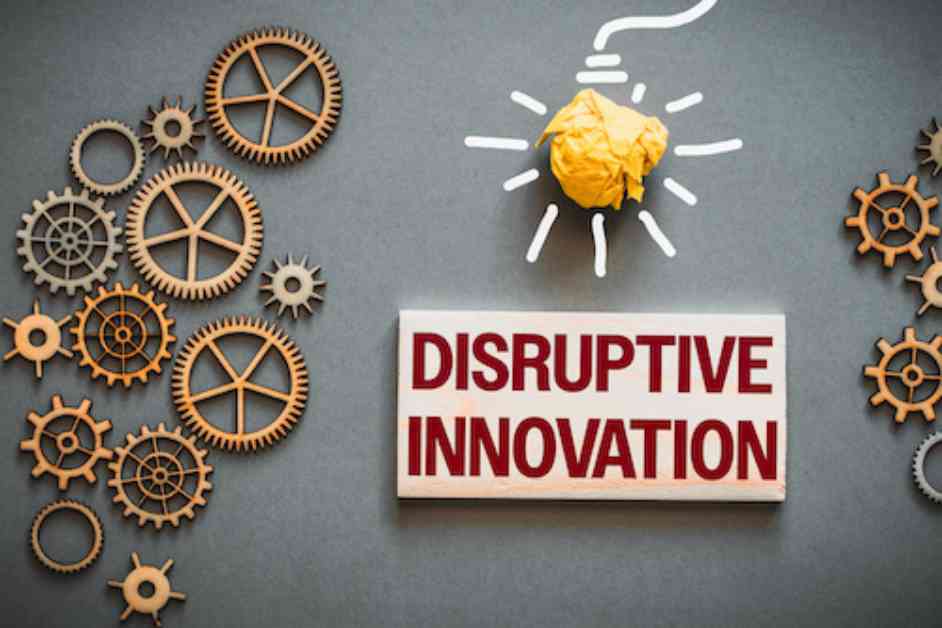The Psychology Behind Disruptive Innovation in Education
In the early 2000s, Netflix co-founders Reed Hastings and Marc Randolph found themselves at a crossroads. Struggling to gain traction as a DVD-rental-by-mail service in the aftermath of the dot-com crash, they sought a partnership with Blockbuster, a giant in the industry. Their vision was to combine the strengths of their online rental service with Blockbuster’s vast network of physical stores, creating a powerful force in the market. However, Blockbuster’s CEO, John Antioco, dismissed their proposal, failing to see the potential of Netflix as a disruptor in the entertainment industry.
This scenario is a classic example of disruptive innovation, where new business models challenge established players in an industry. When companies like Apple introduced personal computers, existing giants like Digital Equipment Corp. couldn’t grasp the idea of selling cheaper, less powerful computers to consumers who had previously shown no interest in such technology. Similarly, taxi companies were slow to embrace ride-hailing apps like Uber and Lyft, failing to recognize the changing demands of consumers. The same pattern holds true in education, where traditional models of schooling are being challenged by innovative approaches.
Changing the Landscape of Education
As the landscape of education continues to evolve, it is essential to understand the psychology behind disruptive innovation. Those working to improve conventional schools may struggle to see the value in emerging models of schooling that deviate from traditional practices. However, students themselves often hold the key to transforming education. By listening to their needs and preferences, educators can create more effective and engaging learning environments.
One of the key challenges in transforming K-12 education is moving from a pipe dream to a pipeline of innovative practices. While the road ahead may seem daunting, there is hope on the horizon. By exploring new models of schooling, educators can pave the way for meaningful change in the education system. For more news and insights on K-12 transformation, visit eSN’s Educational Leadership hub.
The Need for Innovation in Education
In recent months, there has been a growing conversation around the need for disruptive innovation in education. As traditional models of schooling struggle to meet the diverse needs of students, educators are exploring new approaches to teaching and learning. Alternative schools, hybrid virtual schools, and microschools are emerging as viable options for students seeking personalized and innovative educational experiences.
Despite the potential of these new models, there is still skepticism among some education stakeholders. Foundations, nonprofits, and conventional school systems may view these innovative practices as fringe experiments with limited impact on student achievement. However, it is essential to recognize the value of these emerging models and the potential they hold for transforming education.
The Role of Cognitive Bias in Education
One of the main challenges in promoting disruptive innovation in education is overcoming cognitive bias. Educators and policymakers often have preconceived notions about what works in education based on their past experiences and beliefs. This bias can prevent them from recognizing the value of new models of schooling that deviate from traditional practices.
Just as John Antioco was skeptical of Netflix’s early business model, many education stakeholders may be hesitant to embrace innovative approaches to education. However, it is crucial to challenge these biases and explore new possibilities for transforming education. By opening up to new ideas and perspectives, educators can create a more innovative and student-centered learning environment.
Building a Path Forward for Education Innovation
To drive meaningful change in education, it is essential to build a path forward for disruptive innovation. Rather than focusing on convincing skeptics of the value of new models of schooling, educators should prioritize refining and evolving their innovative practices. By building a strong foundation for change outside the mainstream education system, educators can demonstrate the impact and success of their models.
Just as Reed Hastings and Marc Randolph moved forward with Netflix without Blockbuster’s buy-in, educators developing new models of schooling should focus on building with like-minded individuals who understand their vision. By creating a community of supporters and advocates for innovative practices, educators can pave the way for widespread adoption of new models of schooling.
Looking Ahead: The Future of Education Innovation
As the conversation around disruptive innovation in education continues to grow, it is essential to look ahead to the future of education innovation. By embracing new models of schooling and challenging traditional practices, educators can create a more student-centered and engaging learning environment. With a focus on building evidence-based practices and demonstrating the impact of innovative approaches, educators can drive meaningful change in the education system.
In conclusion, the psychology behind disruptive innovation in education is a complex and multifaceted issue. By recognizing the role of cognitive bias, challenging traditional practices, and building a path forward for innovation, educators can create a more dynamic and student-centered learning environment. As we move forward in the journey towards transformative education, it is essential to embrace new ideas and approaches that have the potential to revolutionize the way we teach and learn.

